It’s unlikely that Tyler Beede is on your radar. For the most part, he’s been off of mine. Since the season ended, I took a much-needed hiatus from writing for a few months, and then, upon returning, I’ve spent a lot of time researching and writing about pitchers like Noah Syndergaard, Zack Wheeler, Sonny Gray, Luke Weaver, and Dylan Bundy. What they all have in common is that they are either good, or they have the potential to be good. After looking things over, I think the same can be said about Beede.
While I’ve been keeping an eye on him all season, I’ve only been passively so, and I’d be remiss if I didn’t credit who it was that initially piqued my interest in the changes that Beede is making:
Talked to Tyler Beede about 7k/3IP before injury (results are in, mild strain, was going to take a month off anyway). Said he shortened arm path in the back & threw some footballs (weighted ball baby), saw velo increase. Lived north south in zone, wants to continue. Great stuff.
— Eno Sarris (@enosarris) September 27, 2019
In just 3.1 innings, Beede matched his season high in strikeouts with seven. Of course, by wOBA, the Colorado Rockies (who Beede pitched against in this start) are quite good. By wRC+, which perhaps penalizes them for their park too much, they’re not very good. xwOBA doesn’t think highly of them, either, and they rank ninth-highest in strikeout percentage. So certainly more bad than good.
In any case, Rockies or not, I’m inclined to believe in it, to some extent. I wouldn’t be here if I didn’t. Before I get ahead of myself, let’s take a look at Beede’s delivery in 2018 and 2019. Since he’s said to have shortened up his arm path, focus on his arm action.
Beede, 2018 delivery:
https://gfycat.com/evenfakeamericansaddlebred
Beede, 2019 delivery:
https://gfycat.com/fakereliableindianabat
In terms of arm action, I went in expecting to find some Giolitian changes. In other words, I expected his delivery to transform from something like this to this. As has been widely discussed, Lucas Giolito spent the offseason throwing weighted balls (among other things) that—while not explicitly the goal—helped him shorten up his arm path significantly. Perhaps I’m missing something, but for Beede, I’m not seeing that. Certainly not to extent that Giolito shortened his.
There was something that I noticed, though. More obviously, he’s not going over the head with his hands anymore. But he’s also finishing with more intent. Let’s try this again. This time, focus on how he is finishing.
2018 finish:
https://gfycat.com/homelyreadyaltiplanochinchillamouse
2019 finish:
https://gfycat.com/ellipticalshabbycrocodile
In 2018, he gently finishes with his right leg out front with his throwing arm softly recoiling below his waist. This year, he finishes with his leg whipping around toward the first base side, while his arm snaps back up to his head. In other words, he’s finishing with a stronger recoil of his arm up high and by letting his momentum carry his leg around to the first base side of the mound. You can see how this might help him get more velocity out of his fastball.
If you’re not seeing it, here’s a side-by-side comparison to show you what I’m talking about. 2018 finish on the top, 2019 finish on the bottom:
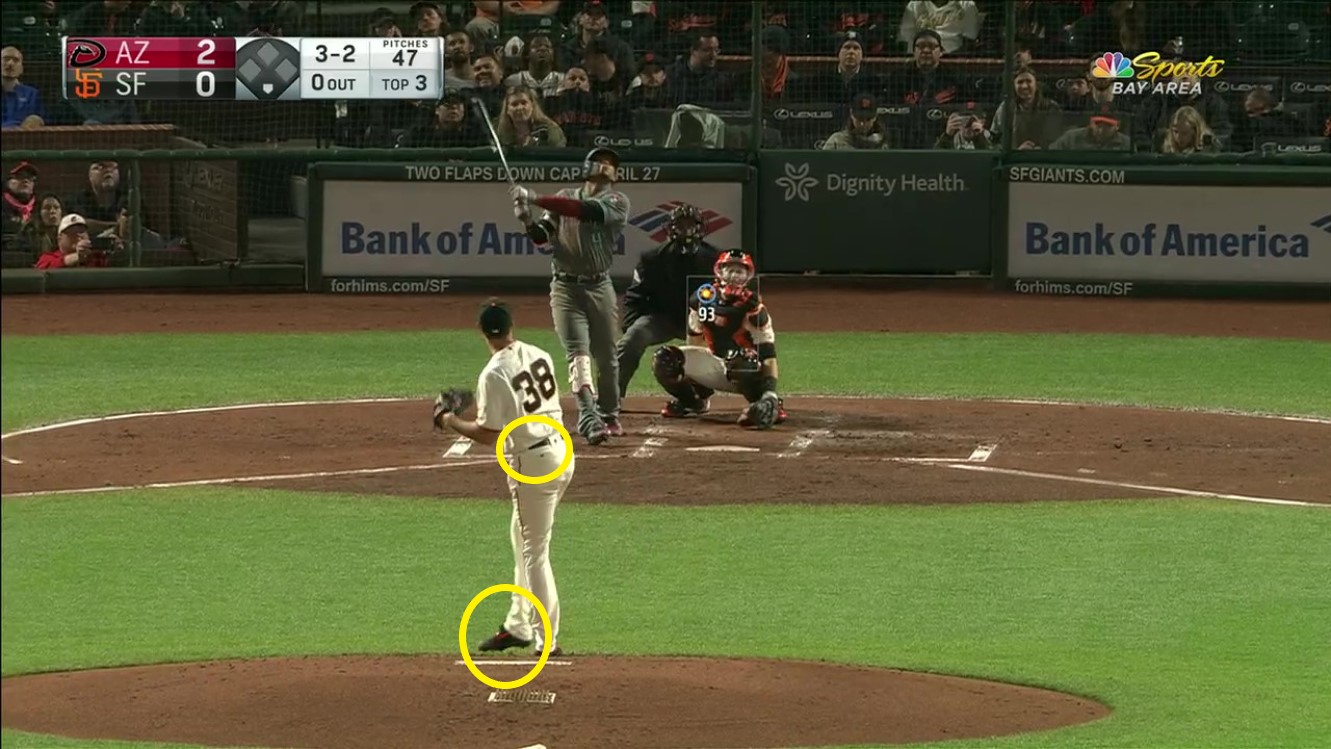
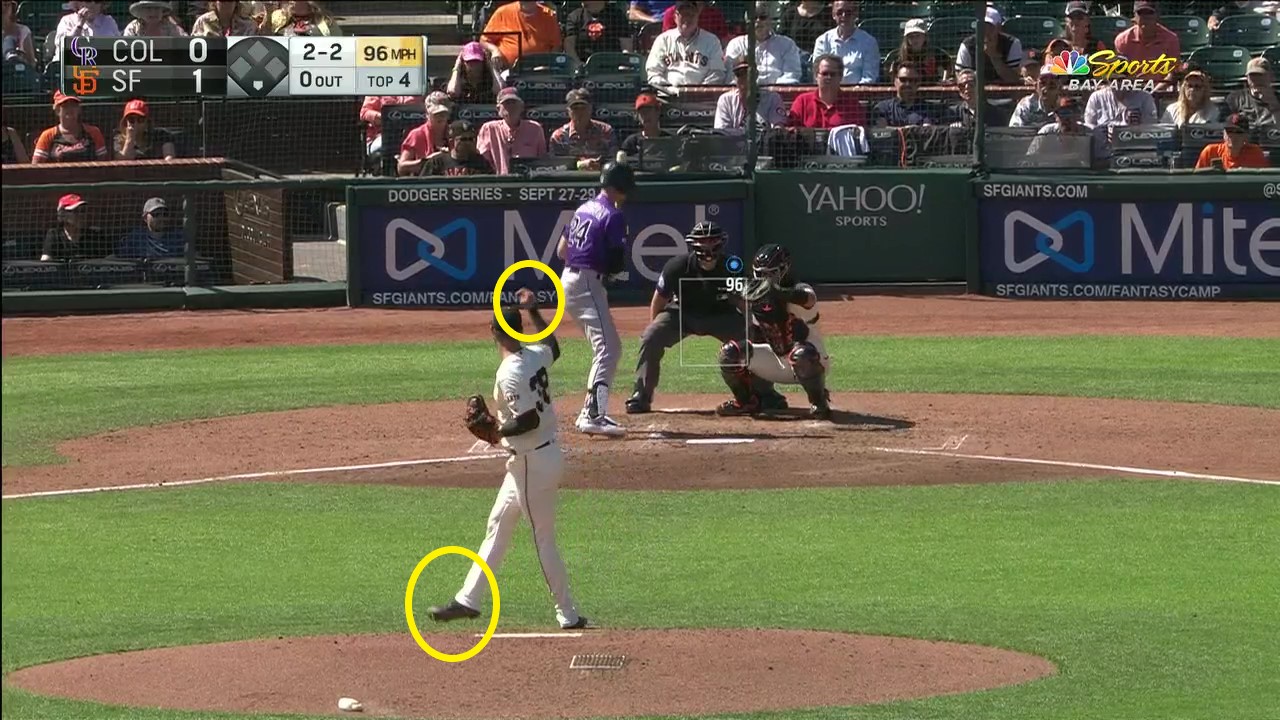
In the first picture, by the time Beede comes to a stop, he has already essentially lost all of his momentum—that’s why he was able to stop so softly and gracefully. On the right, he’s using the leg swing and arm recoil as a means to decelerate his body, because he’s pitching with more intent and using his own momentum to his advantage. I’m not an expert in kinesiology, but this change seems beneficial for both the physical health of his body, as well as velocity.
As I noticed this, I thought of the late Yordano Ventura (although toned down significantly), which reminded me of a Mike Clevinger tweet referencing these precise changes.
For every announcer/baseball fan saying i do this “for show”……I have to do this for deceleration or I fall on my face because I throw with INTENT🗣 https://t.co/9sGmqtUolC
— ❂ Mike 𝕊𝕌ℕ𝕊ℍ𝕀ℕ𝔼 Clevinger ❂ (@MikeClevinger) November 27, 2019
Within this thread lies a phenomenal video of Ventura’s mechanics, where you can see an exaggerated version of what Beede is doing now. No one did it with more flair than Ventura, though.
So, while I’m not seeing any arm-path changes (although I’m certainly not saying they don’t exist), I am seeing changes in intent and pimping the finish. He doesn’t finish like this every pitch, but he didn’t at all last year, and it seems he has done so more frequently in his most recent games too. Either way, this only addresses the first half of Eno’s tweet. It’s also true that he’s living more north-south than before. Let’s take a look at a couple of things. First, a pitch plot from 2018 (against the Padres), and then from August and September of 2019 (against the Rockies).
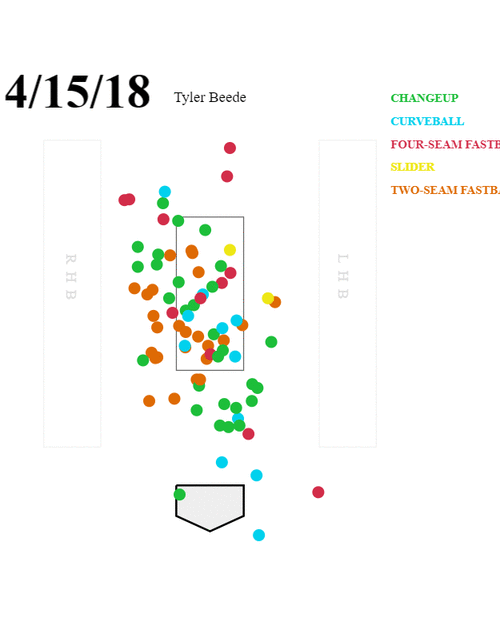
There are a few factors that make it more difficult to make an apples-to-apples comparison. First, Beede was pretty sinker-heavy last year, so of course his sinkers aren’t going to be at the top of the zone. Second, you may notice that in his last start of the year, Beede threw all four-seam fastballs and curveballs, and one slider. Who knows if he would have continued this strictly fastball-curveball approach with a game uninterrupted by injury.
Well, I can tell you right now that his vertical fastball height is unprecedented for him.
Beede, vertical pitch location, by game:
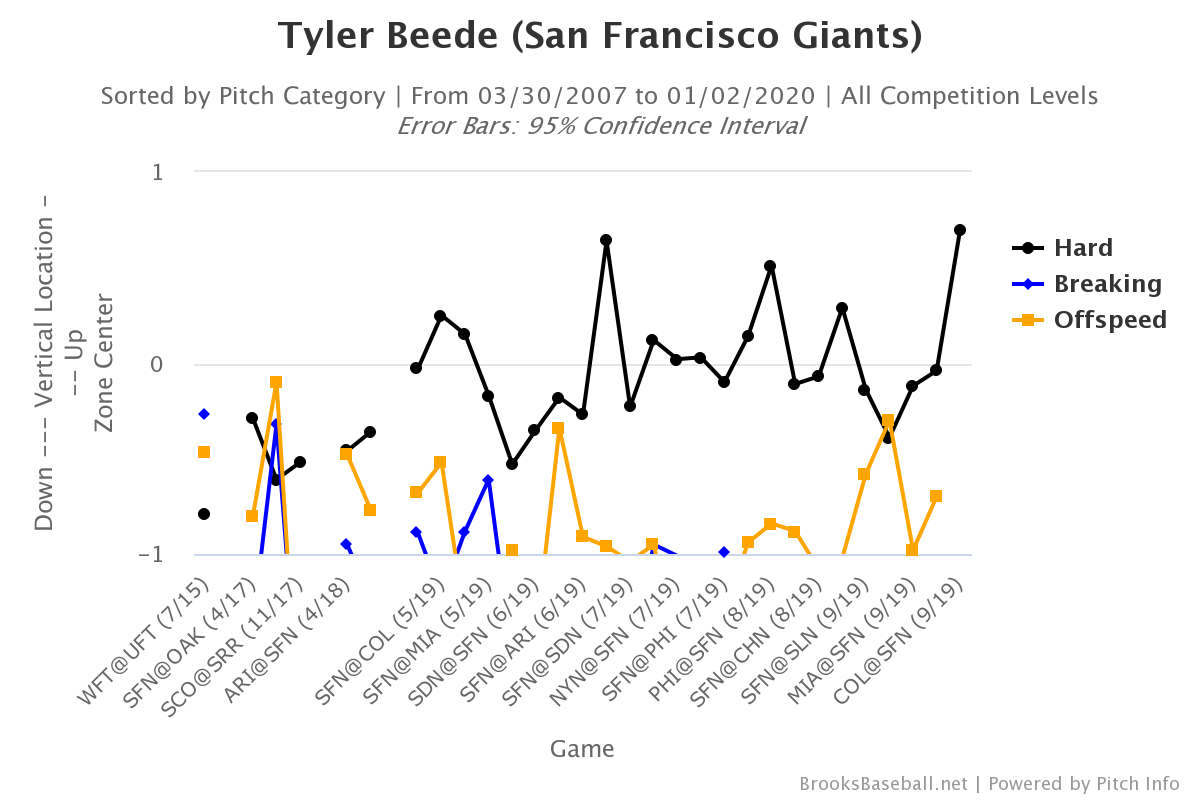
Aside from three other previous starts in 2019, Beede pitched to the vertical-middle of the zone with his fastball for the majority of the year. Then, in his last start, Beede’s average vertical fastball was higher than it has been in his career. So, yes, while it was the Rockies, it seems that his fastball can help his secondaries play up if he’s elevating it up in the zone. I think this is especially true of his curveball because it gets such good vertical movement, but surely there’s symbiosis to be had all around.
Aside from this one game in September that has me jazzed about Beede, there are plenty of things to like about him. He has pedigree, as he was picked 14th overall by the San Francisco Giants in 2014, and he had some success in the minors. But obviously, pedigree only gets you so far. That’s why I’ve come equipped with perhaps my favorite Tyler Beede factoid at my disposal.
Here’s a list of pitchers with three pitches (minimum 200 thrown) with a swinging-strike percentage greater than 15%:
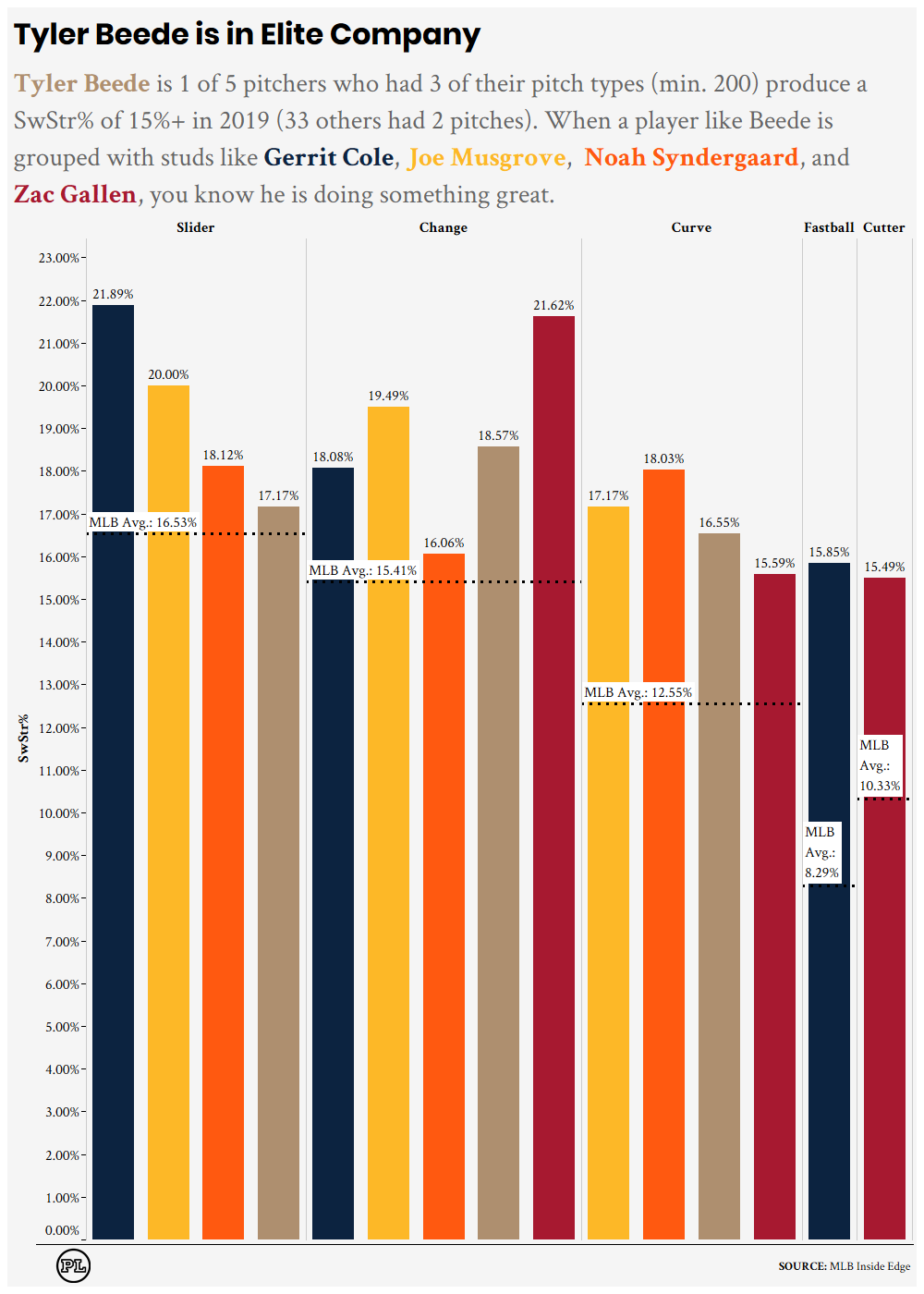
Musgrove is probably a surprise for you. Beede should be an even bigger surprise! In spite of his 5.08 ERA and 5.03 FIP, Beede is on a shortlist with two of the best pitchers in baseball. And then, well, there’s Joe Musgrove. (No offense, Joe!) Blake Snell just missed the list, so this is quite a good list of pitchers to be associated with. Nevertheless, this shows that Beede can do much better than having his fastball and curveball account for 98% of his pitches (as is what happened in his last start). Instead, he can also lean on his changeup, and his weird slider, too.
It’s not all good, though. I mean, obviously—his 2019 ERA is 5.08. That’s bad. So we know what his floor looks like. From his ERA alone, I’m sure you can guess that while the process was good—missing bats is key!—his pitches still didn’t do well, by pitch value.
A table, showing each pitcher’s swinging-strike percentages, by pitch type:
| pVAL | pVAL/C | |
|---|---|---|
| Cole (FF) | 36.2 | 1.99 |
| Cole (SL) | 13 | 1.67 |
| Cole (CH) | 0.4 | 0.17 |
| Gallen (FC) | -3.1 | -1.46 |
| Gallen (CH) | 6.2 | 2.81 |
| Gallen (CB) | 0.8 | 0.3 |
| Syndergaard (SL) | 1.7 | 0.36 |
| Syndergaard (CH) | 6.8 | 1.37 |
| Syndergaard (CB) | 2.5 | 0.85 |
| Musgrove (SL) | 10.4 | 1.74 |
| Musgrove (CH) | -0.2 | -0.08 |
| Musgrove (CB) | 0.8 | 0.35 |
| Beede (SL) | -1.5 | -0.65 |
| Beede (CH) | -6.6 | -1.73 |
| Beede (CB) | 0.4 | 0.17 |
For Beede, two of his pitches had negative pitch values, and his curveball just broke even. He’s also the only pitcher on the list without an elite pitch, by pVAL. Of course, as you may know, pVAL is descriptive—not predictive. It works in the way that ERA does, in that it describes what happened (via run expectancy changes) rather than what will happen. So while they didn’t serve him well in 2019, they still could.
The point here is to show that:
- Beede has several weapons at his disposal, but they weren’t effective by results
- A good swinging-strike rate doesn’t always mean a good pitch
- Gerrit Cole is unreal
But also, I think he got bit by a combination of bad luck and statistical variation. Here’s a table comparing Beede’s BABIP by pitch type to league average, by pitch type:
| Beede | League Avg | |
|---|---|---|
| FF | 0.299 | 0.307 |
| CH | 0.365 | 0.274 |
| CB | 0.343 | 0.304 |
| SL | 0.333 | 0.283 |
Each of Beede’s secondaries has an inflated BABIP. There is certainly a chance that his pitches are simply getting hit hard, so we will simply compare his wOBAcon to his xwOBAcon pitch-type numbers.
| wOBAcon | xwOBAcon | |
|---|---|---|
| FF | 0.392 | 0.404 |
| CH | 0.444 | 0.336 |
| CB | 0.381 | 0.390 |
| SL | 0.406 | 0.442 |
His changeup has underperformed wildly, while his slider has overperformed some. But, in general, his curveball and slider xwOBAcon numbers look inflated. One more time! This time, looking at Beede’s xwOBAcon pitch-type numbers versus the league averages.
| xwOBAcon | xwOBAcon (Lg Avg) | |
|---|---|---|
| FF | 0.404 | 0.402 |
| CH | 0.336 | 0.336 |
| CB | 0.390 | 0.356 |
| SL | 0.442 | 0.353 |
My suspicions are correct. From year to year, xwOBAcon by pitch type is known to be fickle, and so, while we shouldn’t necessarily count on it, there’s a good chance that his curveball and slider both regress toward league average (which would be good). In short, all of his secondaries should be improved next year.
On one hand, a lot of my optimism is based on his last start, and he only faced 11 batters. But on the other hand, Beede is still figuring out what approach works for him—he was much improved in the second half relative to his first half. Beede is making changes, and the changes are good. He doesn’t have the fastball that elite pitchers do, and he doesn’t always throw strikes, but he does have an assemblage of pitches that put him in elite company. There are many reasons to like Tyler Beede, and there are some reasons to not. For now, I like his skill set much more than I don’t.
Graphic by Nick Kollauf (@Kollauf)
Tyler Beede by Mark Alberti/Icon Sportswire | Adapted by Zach Ennis (@zachennis on Twitter and Instagram)


I’ll now be drafting Beede in the first round simply because of how well written this was. Thanks Mikey!
Aw man, far too kind, Kyle! ‘Preciate it!!!
I guess one extra caveat I’d slap on this is he has below-average Command+, but I do have him pencilled as a dollar-days guy in my NL-only.
100%! I actually had this at the very end of my article, but I cut it for brevity.
In July, Eno posted a tweet that had him with one of the worst Command+ numbers in the league for starters. Although, I will say that this conflates his two periods: first half-ish, where he posted a ~15 BB%, and second half-ish, where he posted a much cleaner ~5 BB%. I’d like to see what his Command+ looked like in the latter half of the year. In any case, it’s certainly not as low as Lamet/Newcomb, and it’s about in the Bauer/Darvish/Fried/Giolito territory, so if he gets enough whiffs, he should be fine!
Thanks for your comment!
Thanks for this! It’s kind of slim pickings right now when it comes to things to be excited for on the Giants 2020 major league roster, so this was great to read.
Happy to help! Thanks for reading!
Great article!
Is Joe Musgrove also someone I should target as a breakout candidate? That’s some elite company.
Thanks!
ERA-wise, I see 2019 as Musgrove’s floor. As you saw, he has multiple swing-and-miss pitches, and a solid fastball. With the changes the Pirates have made to their front office/philosophy, I’m optimistic about Musgrove in 2020, but only if he makes the necessary changes. That is, less sinkers, and more sliders, curveballs, and changeups.